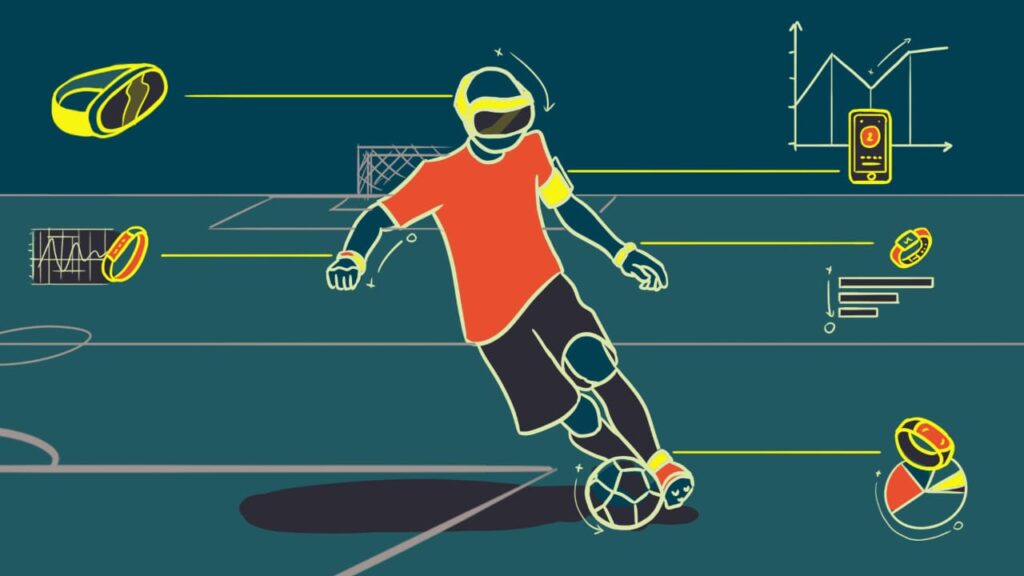Wearable technology refers to electronic devices that can be worn on a user’s body. These devices can take various forms, such as jewelry, accessories, medical devices, clothing, or as an element of clothing. Wearable technology involves processing and communication capabilities, but all wearable devices can have different functionality. For example, this technology takes many forms, from simple fitness trackers to artificial intelligence (AI)-powered hearing aids.
How does wearable technology work?
Currently, wearable technology is being used in things like smartwatches, fitness trackers, virtual reality (VR) headsets, smart jewelry, web-enabled glasses, and Bluetooth headsets. The way all these devices work depends on their area of use, such as health, fitness, or entertainment. A microprocessor, battery, and internet connectivity are typically found in wearable technology, allowing it to sync data with other electronic devices like computers and mobile phones.
Wearables are equipped with sensors that help in body movements, biometric identification, or location tracking. For example, fitness trackers or smartwatches, which are the most common types of wearable technology, monitor a user’s physical activity and health information throughout the day.
Types of wearable technology and their uses:
The use of wearable technology today is not limited to consumer electronics but has also made its place in various fields like health, sports, fashion, and military. Let’s take a look at some of its important uses:
Health Monitoring:
Wearable technology is being used most in health monitoring. Fitness trackers and smartwatches track blood pressure, heart rate, and caloric intake. During the COVID-19 pandemic, health awareness among people increased, which also increased the use of wearables. For example, Apple added a new “sleeping beats-per-minute” feature for COVID-19 patients in its Cardiogram app, which monitors their heart rate.
Entertainment and Gaming:
VR headsets, smart glasses, and controllers are being used in the gaming and entertainment sector. Popular VR headsets such as Oculus Quest, Meta Quest, and Sony PlayStation VR are used for gaming, watching movies, and virtual travel.
Fashion and Smart Clothing:
Wearable technology is also being used in fashion and clothing. Smart jackets such as Levi’s made with Project Jacquard technology, whose threads are made of electrical fibers, allow the user to answer calls, play music, or take pictures. Additionally, smart watches, bracelets, shoes, and jewelry are also popular examples of wearable technology.
Military Use:
Wearables are used in the military to monitor the condition of soldiers, such as VR-based simulation exercises, and boot inserts that calculate the impact of the weight and performance of soldiers’ equipment.

Sports and Fitness:
Wearable technology is being used in the sports industry to track athletes’ performance and activities. Devices such as Fitbit, Apple Watch, Garmin, Samsung Galaxy Watch, and Polar provide players’ health and performance statistics.
Examples of wearable technology:
Smart Jewelry:
This includes smart rings, bracelets, and watches. Small wearable devices often work in conjunction with smartphone apps.
Body-mounted Sensors:
These sensors are placed on the body for health monitoring and send biological data wirelessly.
Fitness Trackers:
Fitness trackers are worn on the wrist or head and monitor physical activities and health signals. Apps are connected to these devices in order to store, process, and report data.
Smart Clothing:
This type of clothing has built-in technology that can change the properties of the fabric for fitness or health monitoring, connectivity to the phone, and user preferences.
AI Hearing Aids:
These devices filter out unwanted noise and automatically adapt their performance to the user’s hearing needs.
Future of Wearable Technology:
The field of wearable technology is constantly undergoing new research and innovation, making it even more advanced and impressive in the times to come. Some upcoming wearable technology products and ideas are as follows:
Apple Glasses:
Apple’s smart glasses, which sync with the iPhone, will give the user the ability to display text, email, games and other information directly on the glasses.
Energy Harvesting:
One of the challenges of wearable technology is its battery life, which can be solved by energy harvesting technology, where the device’s battery can be charged using body heat, motion, or solar energy.
Smart Contact Lenses:
These contact lenses can provide real-time information to the user’s eyes and will have the ability to sync with other devices to show data without any screen.
Conclusion
Wearable technology has made our lives more technologically capable and intuitive. Whether it is health monitoring, fitness tracking, or entertainment, this technology has become an important part of our daily lives. It is expected to advance further in the future, where smart glasses, energy harvesting, and AI-based devices will revolutionize our lifestyle.
Also Read: